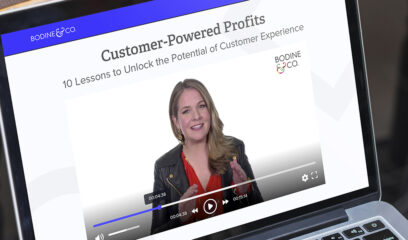Happiness gurus say the key to contentment is low expectations. This is great news for the pessimists whose strategy is to expect the worst and then enjoy a pleasant surprise when the apocalypse doesn’t happen.
But in the customer experience world, this doesn’t fly. You cannot sandbag your customers’ expectations by promising them a miserable experience and then hitting just above the low water mark. Instead, you need to align your customers’ expectations with the experience you can actually deliver. You need to get real with your customers.
Why are realistic expectations integral to customer experience?
Think of a child whose parents have promised him a kitten for Christmas. If little Tommy comes bounding down the stairs on December 25 with a mental image a cuddly new pet, he’ll be mightily disappointed to find a stuffed animal kitty cat under the tree. In contrast, Tommy’s next-door neighbor Suzie is delighted to receive the wooden pony she was expecting. Sure, Suzie would have liked a real pony, but her parents promised her a rocking horse and her parents delivered. Suzie’s parents are heroes. Tommy’s parents are about to witness a nasty tantrum.
Lots of companies have screwed up this delicate dance. Apple (and its supermodel entourage) promised us a pony in its new smartwatch, but our recent research found that that Apple Watch owners and prospective buyers are less than enthralled with its actual capabilities. And for years, JetBlue promised it would “NEVER TAKE THE ‘R’ OUT OF FREE” in regards to checked bags. Never, JetBlue? Several weeks ago, the (formerly?) beloved airline joined nearly every other US airline in instituting baggage fees.
In contrast, Uber has turned expectation setting into an art form. Before you ever press the “Request an Uber” button, you can check how many cars are nearby and predict how long you’ll have to wait for a ride. Uber also takes the sting out of potentially negative experiences like surge pricing by warning riders ahead of time. For example, last Halloween Uber emailed users with specific predictions for when fares were likely to peak. Imagine what it would be like to have that same level of transparency and expectation setting in the seemingly random world of airline fares or the impenetrable morass of health insurance coverage.
The secret to creating positive customer perceptions, thoughts, and emotions is to set realistic expectations about what you can deliver, when you’ll deliver it, and what you’ll do about it if something goes off the rails. The secret is to be honest and transparent with your customers.
Make only promises you can keep, and then—are you ready? This part is critical—keep those promises.




